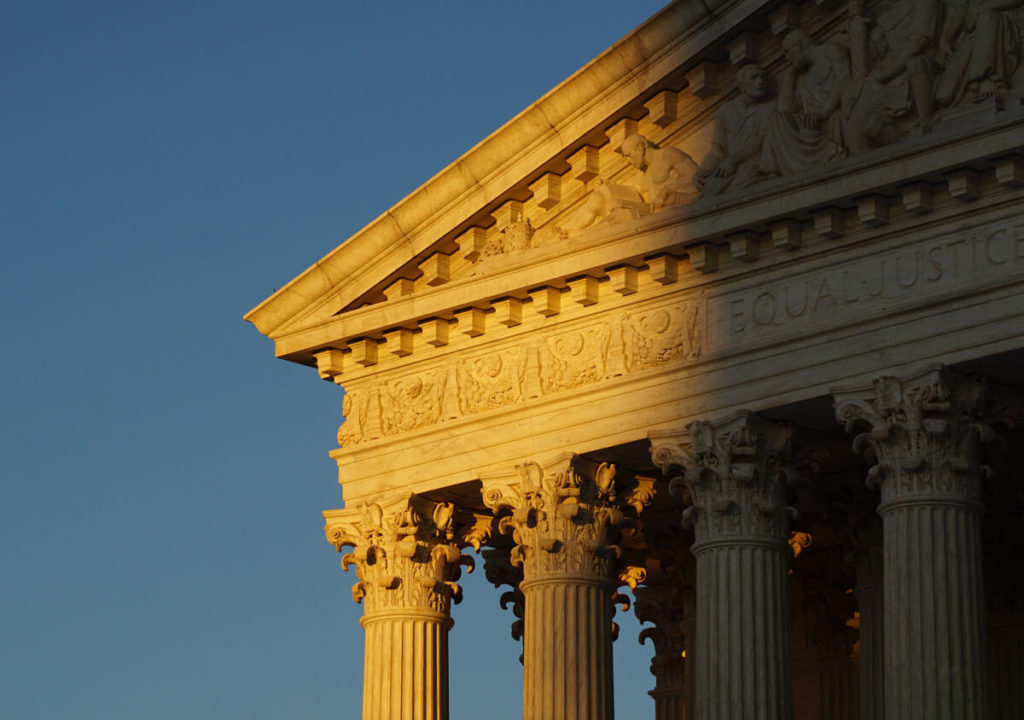
On a chilly November morning in 2018, Milt Toby and I stood in a line outside the steps of the Supreme Court Building in Washington, D.C. We were in town for the ASJA Regional Conference, arriving a day early to catch a Supreme Court hearing. Milt and I follow the Supreme Court like it’s a sports franchise. As a long-time attorney, Milt has good reason for this obsession. Me? I fell in love when Justice Sandra Day O’Conner joined the bench. While Milt was working to overturn sentences for death-row inmates, I was listening to tapes of old cases in my 45-minute commute to teach high school.
I don’t mind telling anyone that Milt is one of my favorite people in the world. I enjoy his wry humor, deep intelligence, and careful reasoning. As the previous president of ASJA, he is the yin to my yang. I am quick to respond; he deliberates carefully before speaking. I will take on a task by myself; he will bring in other voices to discuss all of the pros and cons. Milt has been a tremendous mentor to me in my presidency—and in other ways, too.
So, when Milt offered to go with me to watch a Supreme Court hearing, I jumped at the chance. We arrived early to find we were too late for the first case, but we waited for the second, a complicated employment case. It didn’t matter. The day was bright and sunny, folks in line were friendly, and as we reached the security guard who was ushering people in, Nina Totenberg strode out of the building and passed us, her assistant next to her with a tiny recording device. I said, “Thank you, Nina” and was rewarded with a distracted nod. After breaking the Anita Hill case, Totenberg became my journalist idol. During the Clarence Thomas’s confirmation hearing, my parents listened to NPR while restoring a wall in their house. We still call it the “Anita Hill Wall.”
The Supreme Court is intertwined with the First Amendment—not only the free speech rights of individuals but of course the rights of a free press. And that’s exactly the foundation on which ASJA vs. Becerra is based. In December 2020, ASJA joined the National Press Photographers Association (NPPA) to sue the state of California over its anti-freelance law, AB5. Our argument is that AB5, and the subsequent revisions, prevent freelance journalists from making a living in California. In turn, this restricts free speech and the exercise of a free press.
Just a month before ASJA took this important step, Milt and I were shepherded into the Supreme Court Building, asked to put our coats and bags into lockers, and pointed to seats in the galley before the justices took the bench. The Supreme Court hearing room was surprisingly small, and the bench itself was surprisingly huge. Between rows of onlookers and the bench was a long table, with microphones and red-and-green lighted timers. Security guards walked along the aisles watching the crowd carefully. Of course, I knew these cases were serious business, but being in the room, I was even more impressed by the court’s gravity.
After a few moments of waiting, the gavel sounded, and everyone was asked to rise. The curtains behind the bench opened, and the justices filed out and took their seats. Justice Thomas helped Justice Ruth Bader Ginsberg down the steps and to her chair. Almost immediately, the Marshal of the United States Supreme Court made his common call: “The Honorable, the Chief Justice and the Associate Justices of the Supreme Court of the United States. Oyez! Oyez! Oyez!” We sat.
It was thrilling to witness the court in action. There is a rhythm to the arguments made by the attorneys and the percussive interruptions from the justices themselves. It’s a kind of call-and-response, poetry, and the Socratic method. After 45 minutes or so, the attorneys had had their say, we stood again, and the justices filed out.
Justice Ginsberg was so tiny, I could only make out the top of her head and the papers she held up in front of her face. Justice Thomas leaned back in his chair like it was a recliner. Because I often listen to online recordings of hearings, I easily recognized the voices of the other justices. Milt and I discussed every detail over lunch.
On February 22, we learned that on behalf of ASJA and NPPA, Pacific Legal Foundation is petitioning the U.S. Supreme Court to hear our appeal of ASJA vs. Becerra. On October 6, 2021, the Ninth Circuit of Appeals ruled against us. Our last option is the Supremes. We don’t know if they’ll take up the case, and if they do, it’s not certain they will rule in our favor. Our attorneys have a stellar track record, winning 14 of the 16 cases they have argued (when directly representing clients) in front of the Supreme Court.
I’m proud to be a part of an organization that takes our freedoms of speech this seriously. I’m grateful to the Pacific Legal Foundation, who is representing us pro bono. And most of all, I’m honored to have been able to work with Milt Toby on this over the last two years.
ASJA owes tremendous gratitude to several members in California—including Randy Dotinga and JoBeth McDaniel—for raising the alarms when AB5 was proposed. These members worked tirelessly to advocate on behalf of all freelance journalists in California. They also helped lay the groundwork for similar fights in other states and on the federal level against The ProAct. There are many reasons to be a part of ASJA, but I think this is one of the best. When we fight as a group, we can make greater strides.
That November day in 2019, Milt and I had no idea that we’d lead ASJA in a lawsuit against the state of California. We couldn’t imagine that we might see this case head to the Supreme Court. It was through smart legal strategy and support that we’ve gotten here. (Not to mention what we think are unjust decisions in the lower courts.) And we have no idea if the case will even be heard.
I’ll be in Washington D.C. to hear the case, if it comes to that. And I certainly hope you’ll join me, Milt.
Photo by Ian Hutchinson on Unsplash

